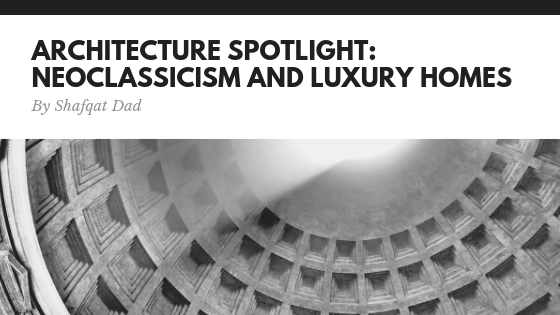There are a great many styles that are implemented into high-luxury homes and hotels today, perhaps one of the most prominent and pertinent is the neoclassical style. Neoclassical architecture began to emerge during the 18th and early 19th centuries and as the name suggests was a revival of styles typical of ancient Greece and ancient Rome. The classical form of architecture used marble and stone as decorative features, brought back ionic, Doric, and Corinthian columns, and focused on scale, geometry, and balance, among other features.
This style of architecture came to emerge in the modern era first through a variety of government buildings and religious structures. The implementation of Ancient Greek and Roman features in government buildings, for instance, The White House, The Lincoln Memorial, and others harkened back to features representation law, democracy, and the republic. This revival occurred all over the world. Government buildings in France, England, Italy, and other countries also sported these features.
One of the main aspects of this style was the focus on Vitruvian proportions. Vitruvius was a Roman architect and engineer who proposed that every architecture structure should abide by a particular formula that balances “firmitas”(strength), “utility”(functionality), and “venustas”(beauty). A balance of the three would form a golden formula that was the ideal of beauty, and reclaiming this formula in modern and contemporary buildings was a huge aspect of the revival. It was also thought that this formula replicated the proportions and balance of the human body.
Aside from government buildings, this style also overtook the way that luxury estates, houses, and hotels were designed. Perhaps one of the well-known homes that embody neoclassicism is Monticello, the former home of Thomas Jefferson, the third president of the United States. It is fitted with a roman style dome, as well as Doric columns along the front, and a pediment.
It is exciting to consider how luxury architecture and design will continue to rethink and revive classical elements to embody a style that both harkens to the past and looks toward the future.

